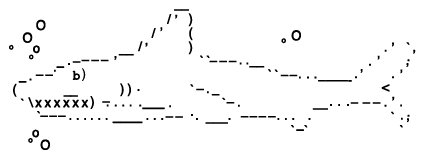Tuesday May 11, 2010

Beachgoers in Australia have long feared the notorious white shark (Carcharodon carcharias), or ‘white pointer’ as it is known in the region. Between 1876 and 2008 there have been 50 confirmed, unprovoked attacks by white sharks in the country (International Shark Attack File). However, people often fail to realize that humans are much more of a danger to sharks than sharks are to humans. White sharks are listed as “Vulnerable” by the World Conservation Union (IUCN), despite worldwide distribution in temperate waters.
In an effort to better understand the migration patterns of the species and how they relate to the risk of attack on humans, scientists from the Western Australia Department of Fisheries have tagged over 70 white sharks with acoustic transmitters. When a tagged shark approaches within 500m (1,640 ft) of one of the receivers near popular beaches in Perth, a signal is sent to a satellite. An email and text messages are generated and sent to the Department and to lifeguarding agencies. This system of monitors is part of a much larger network, which includes the Australian Acoustic Tracking and Monitoring System (AATAMS), so that sharks can be tracked well beyond Perth. While the Department of Fisheries is primarily interested in white shark movements, the array of receivers in Perth also allows the lifeguards to close the beach before a shark is even sited. This real-time tracking technology will help keep the public informed of any danger, but may also alleviate some public concern, since much of the fear of white sharks comes from the unknown.
Illustration by our own Max Boyd
